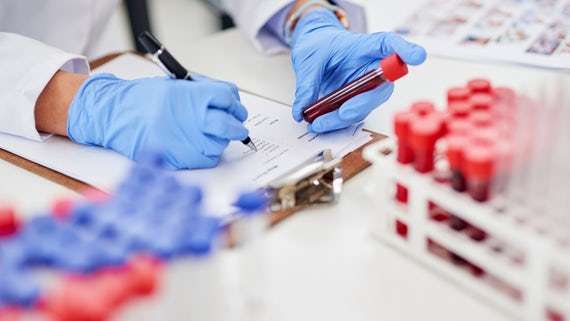Tracking the body's mini-shuttles

The development of a new technique for labelling the body's own transporters—exosomes—could have long term benefits in the treatment of life-threatening medical conditions, including cancer.
A team of researchers at Cardiff University's Schools of Pharmacy and Pharmaceutical Sciences, Medicine, and Biosciences, together with the Basque Foundation for Science in Spain, has discovered a new way of tagging these nanobodies that are made naturally by cells.
Exosomes play an important role in the way in which cells, including cancer cells, communicate with each other and can lead to the progression of disease. However, more recent research has shown that exosomes can also be used as mini-shuttles to deliver drugs to tackle a number of diseases at different sites in the human body.
Now, this innovative research has identified a new way of tagging exosomes so that they become fluorescent and can be tracked through fluorescence microscopy. This means researchers can examine exosomes in much greater detail and visualise them interacting with, and entering, cells.
Crucially, this research, funded by COMPACT European Consortium, also revealed that once labelled, the exosomes continue to work as messengers and are still able to have an effect on cells.
Professor Arwyn Jones from Cardiff's School of Pharmacy and Pharmaceutical Sciences said: "The hope now is that other researchers, both here in Cardiff University and around the world, will be able to use this new method of tagging exosomes to further reveal their amazing natural capacity to influence biology and potentially deliver drugs to treat disease."
In the longer term, by tagging exosomes through the methodology developed through this research, it will be possible to examine in more detail how they regulate the cancer environment or how they may be loaded with drugs to deliver medication to tumours or defective organs within the body.
The research "Fluorescence labelling of extracellular vesicles using a novel thiol-based strategy for quantitative analysis of cellular delivery and intracellular traffic" is published in the journal Nanoscale.
More information: H. D. Roberts-Dalton et al. Fluorescence labelling of extracellular vesicles using a novel thiol-based strategy for quantitative analysis of cellular delivery and intracellular traffic, Nanoscale (2017). DOI: 10.1039/C7NR04128D
Journal information: Nanoscale
Provided by Cardiff University





















